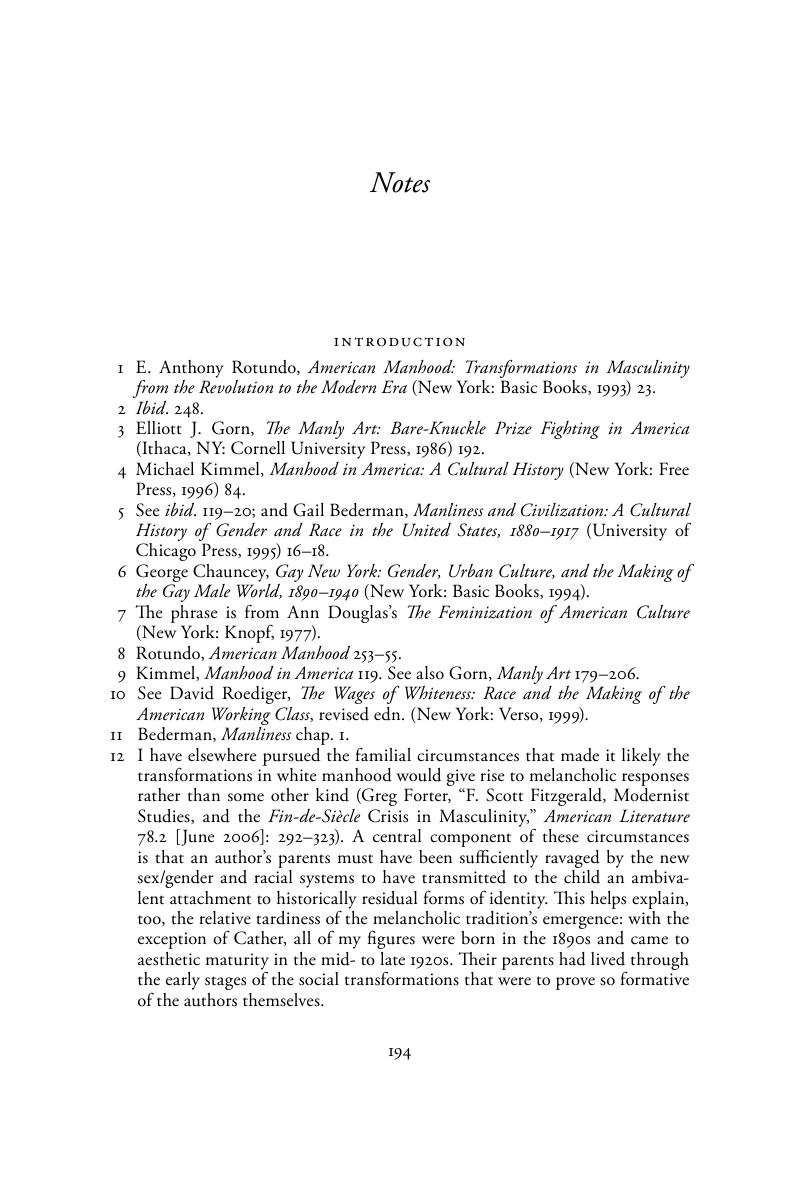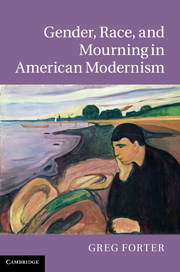Book contents
- Frontmatter
- Contents
- Acknowledgements
- Introduction
- 1 Gender, melancholy, and the whiteness of impersonal form in The Great Gatsby
- 2 Redeeming violence in The Sun Also Rises: phallic embodiment, primitive ritual, fetishistic melancholia
- 3 Versions of traumatic melancholia: the burden of white man's history in Light in August and Absalom, Absalom!
- 4 The Professor's House: primitivist melancholy and the gender of utopian forms
- Afterword
- Notes
- Index
- References
- Frontmatter
- Contents
- Acknowledgements
- Introduction
- 1 Gender, melancholy, and the whiteness of impersonal form in The Great Gatsby
- 2 Redeeming violence in The Sun Also Rises: phallic embodiment, primitive ritual, fetishistic melancholia
- 3 Versions of traumatic melancholia: the burden of white man's history in Light in August and Absalom, Absalom!
- 4 The Professor's House: primitivist melancholy and the gender of utopian forms
- Afterword
- Notes
- Index
- References
Summary

- Type
- Chapter
- Information
- Gender, Race, and Mourning in American Modernism , pp. 194 - 213Publisher: Cambridge University PressPrint publication year: 2011



